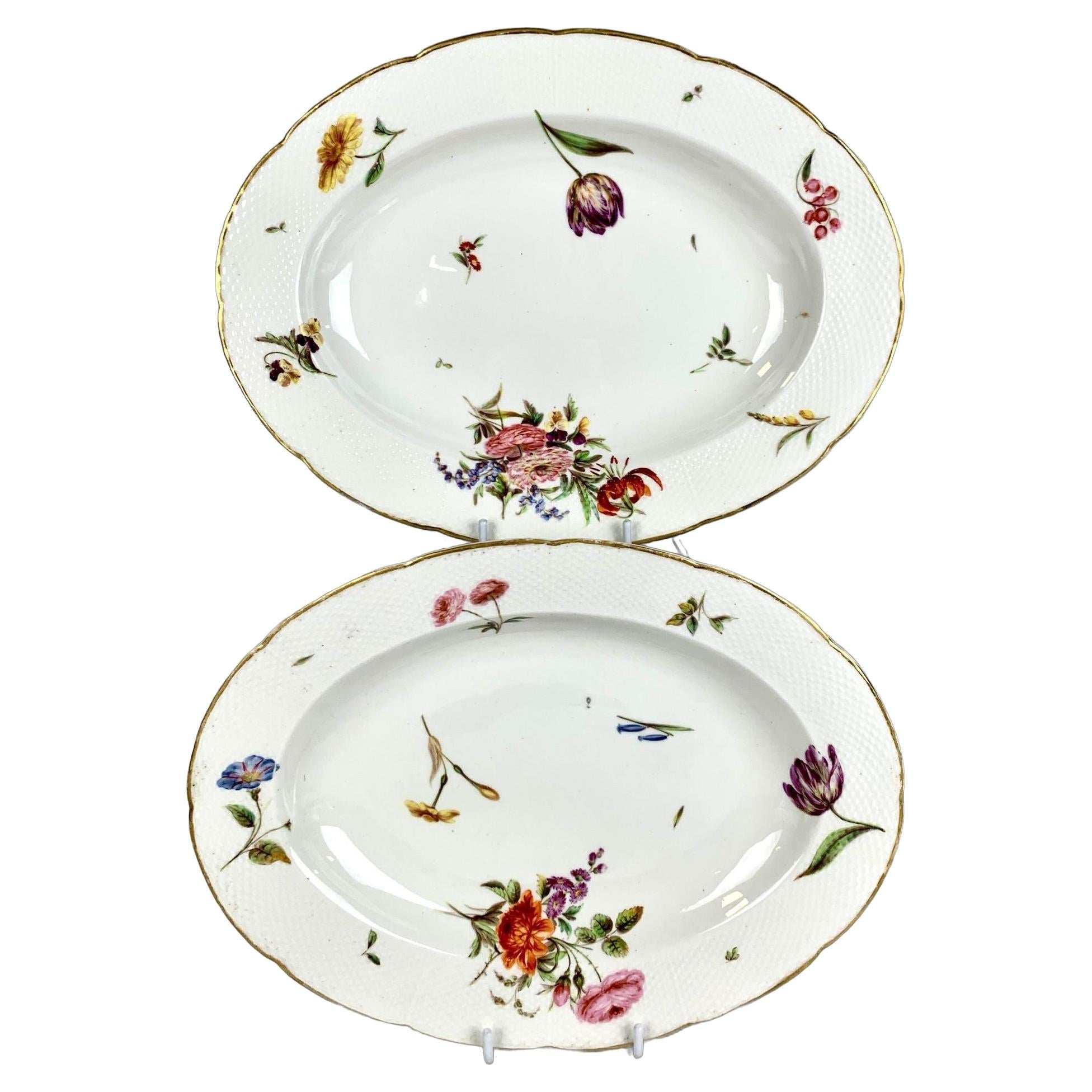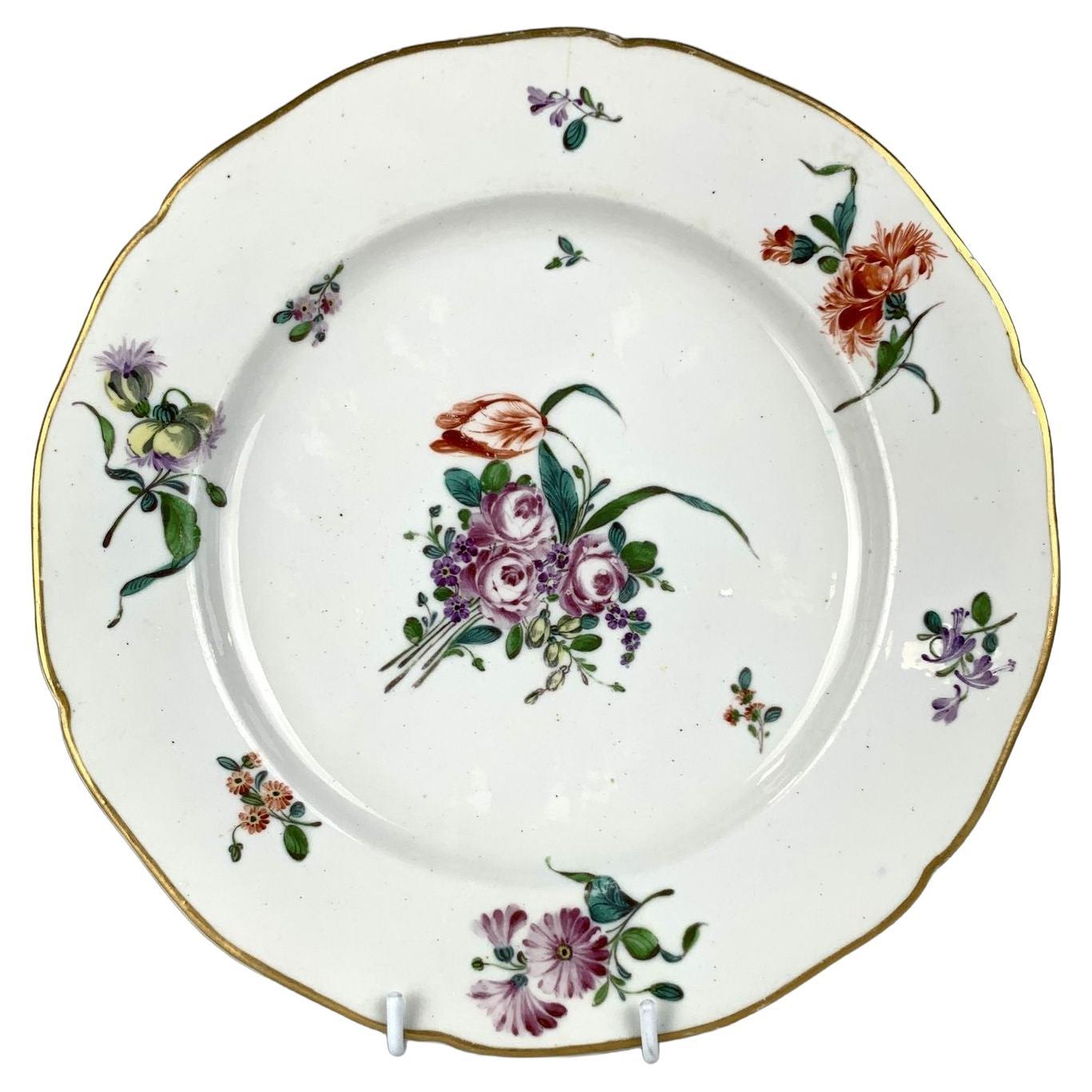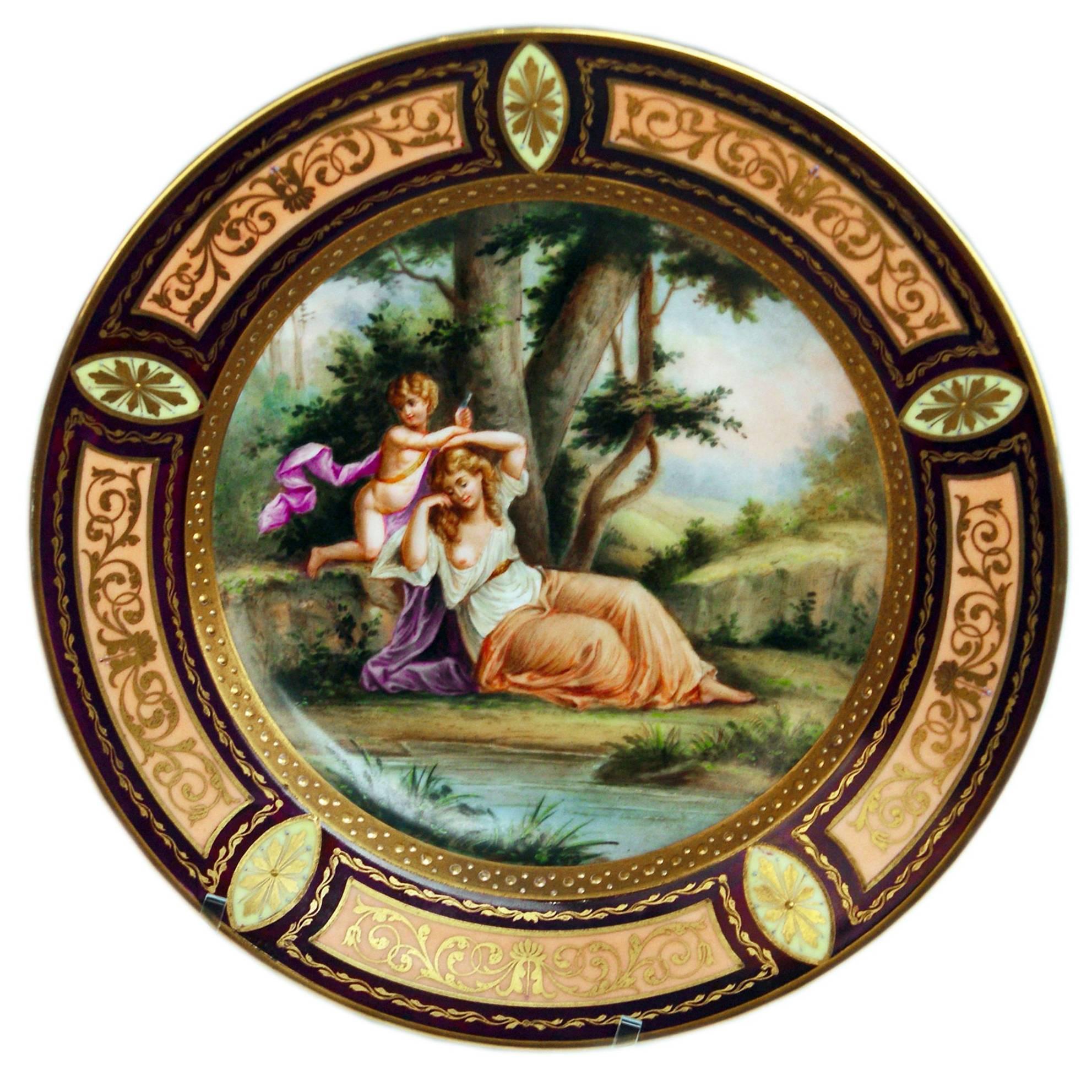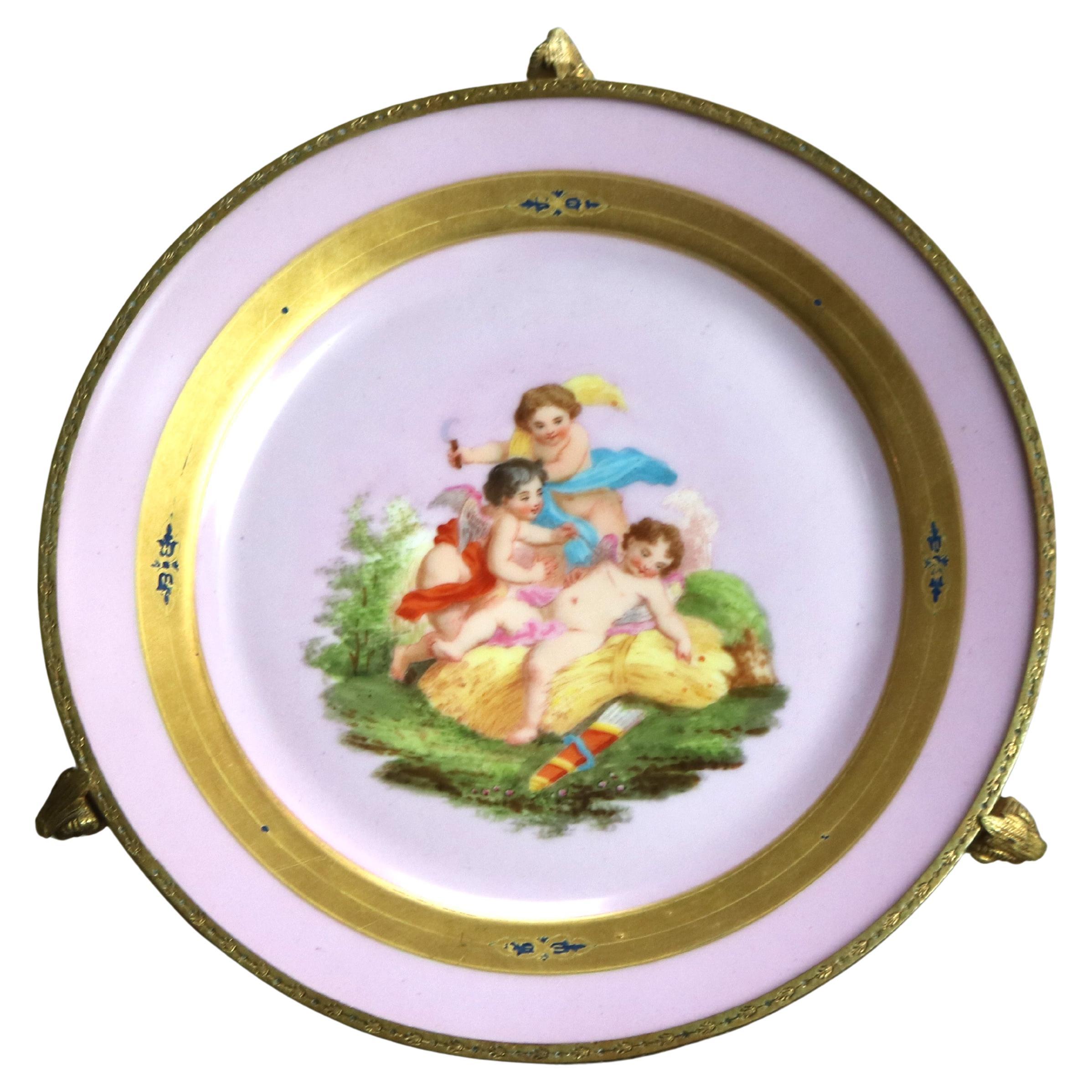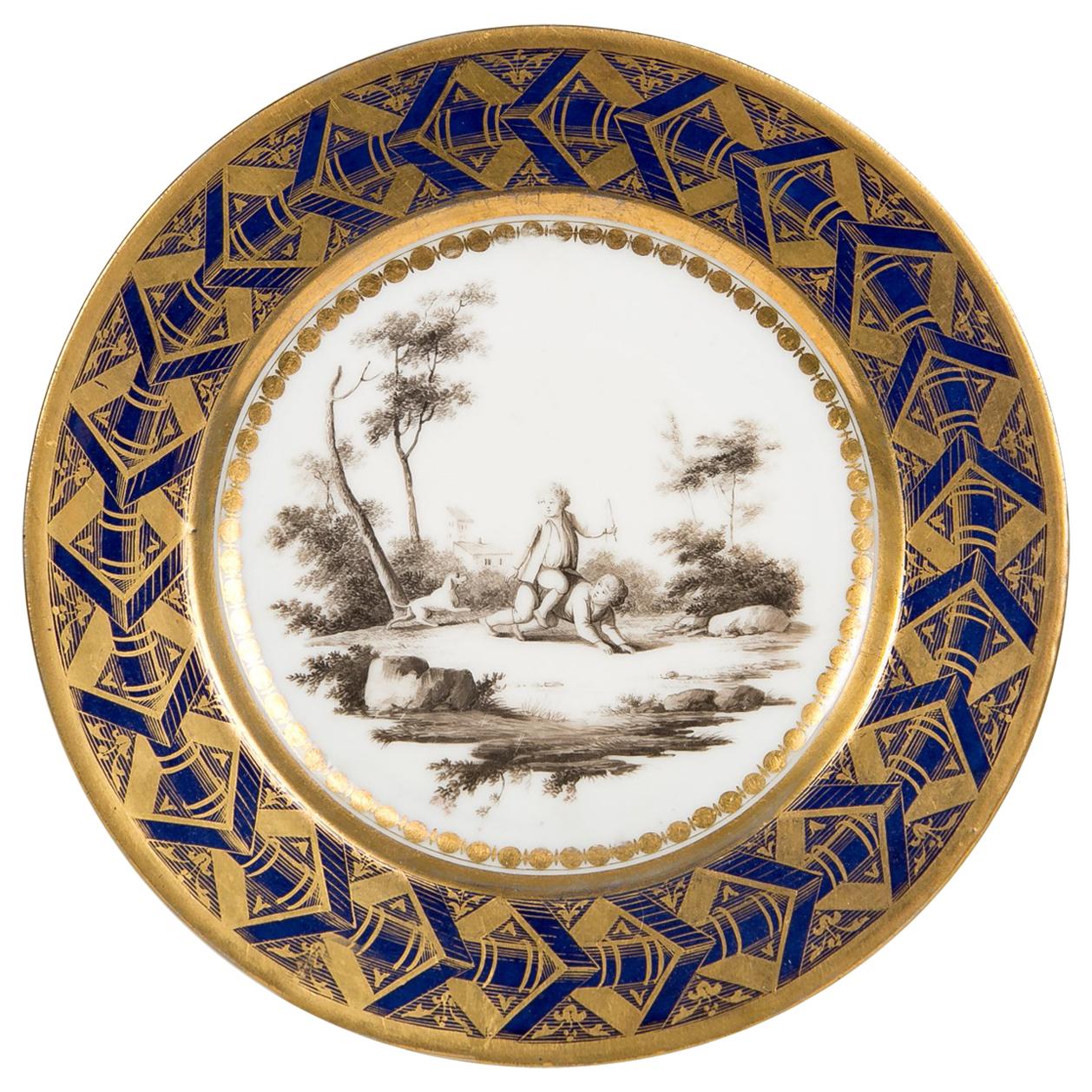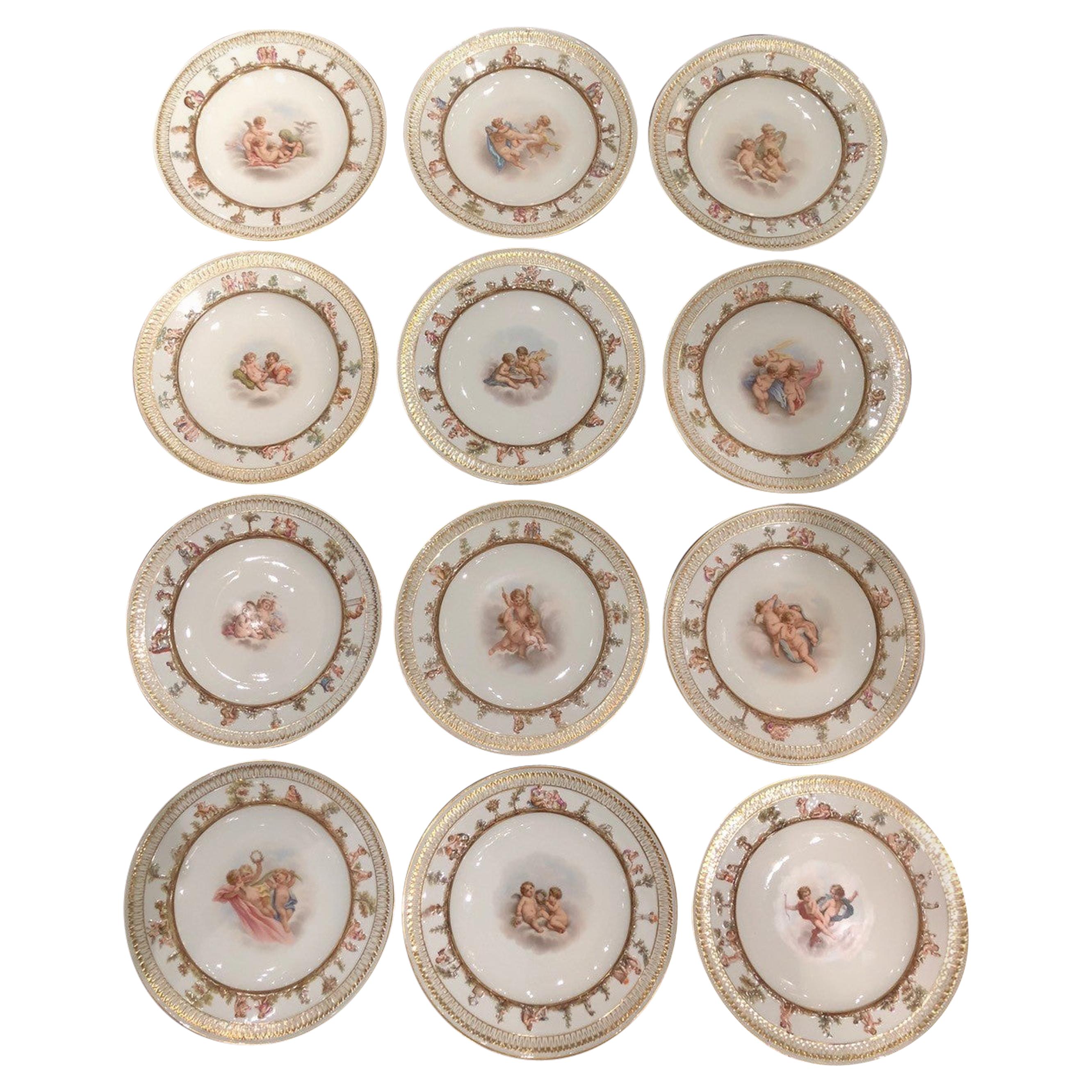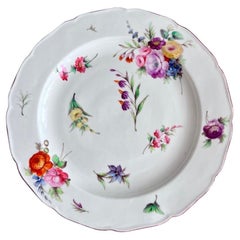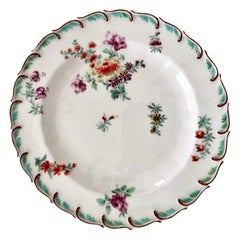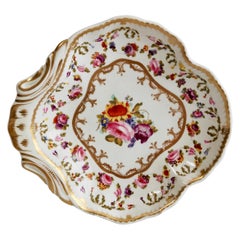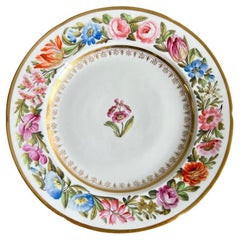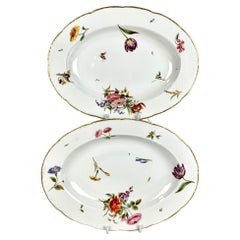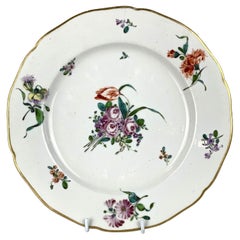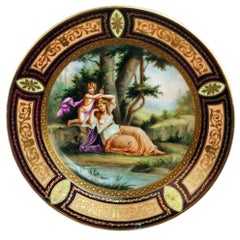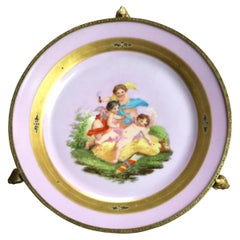Items Similar to Crown Derby Porcelain Plate, Puce Cherubs by Richard Askew, Georgian ca 1785
Want more images or videos?
Request additional images or videos from the seller
1 of 13
Crown Derby Porcelain Plate, Puce Cherubs by Richard Askew, Georgian ca 1785
$1,150
£872.59
€997.73
CA$1,606.24
A$1,785.92
CHF 932.51
MX$21,738.97
NOK 11,898.40
SEK 11,148.23
DKK 7,446.26
Shipping
Retrieving quote...The 1stDibs Promise:
Authenticity Guarantee,
Money-Back Guarantee,
24-Hour Cancellation
About the Item
This is a beautiful Crown Derby plate made in about 1785. The very charming decoration of a puce putto is by Richard Askew.
The Derby Porcelain factory has its roots in the late 1740s, when Andrew Planché, a Walloon Huguenot refugee, started making simple porcelain toys shaped like animals in his back yard. In 1756 Staffordshire enameller William Duysbury and banker John Heath started a new porcelain factory with Planché and this was to grow out to the largest factory of its time, buying up the bankrupted Chelsea and Bow factories, as well as the stock of several other workshops including that of James Giles. The combination of various traditions, porcelain making skills and sophisticated clients enabled Duesbury to create one of the best porcelain factories of the 18th and 19th Centuries, which after many ups and downs is still operative today.
Richard Askew (ca 1730-1798) was one of the famous artists who came from Chelsea and then moved to Derby in about 1772. He didn't only work for Chelsea and Derby, but also worked on a freelance basis for many others, and there is evidence that he advertised himself all over Britain and Ireland as a miniature painter.
This plate is from about 1885, when Askew had relocated to London but still carried out many works for Derby. The plate has an interesting pattern that reminds you of the French-style "oeil de perdrix", although it actually consists of little roses. In the centre of the plate is a puce cherub or putto who seems to be busy talking to a pair of doves. The cherub is a typical chubby fellow the way Richard Askew was known to paint them.
Condition report: The plate is in excellent condition without any damage, repairs or crazing, and just some light wear on the face as visible in the pictures.
Antique British porcelain is never perfect. Kilns were fired on coal in the 1800s, and this meant that china from that period can have some firing specks from flying particles. British makers were also known for their experimentation, and sometimes this resulted in technically imperfect results. Due to the shrinkage in the kiln, items can have small firing lines or develop crazing over time, which should not be seen as damage but as an imperfection of the maker's recipes, probably unknown at the time of making. Items have often been used for many years and can have normal signs of wear, and gilt can have signs of slight disintegration even if never handled. I will reflect any damage, repairs, obvious stress marks, crazing or heavy wear in the item description but some minor scratches, nicks, stains and gilt disintegration can be normal for vintage items and need to be taken into account.
There is widespread confusion on the internet about the difference between chips and nicks, or hairlines and cracks. I will reflect any damage as truthfully as I can, i.e. a nick is a tiny bit of damage smaller than 1mm and a chip is something you can easily see with the eye; a glazing line is a break in the glazing only; hairline is extremely tight and/or superficial and not picked up by the finger; and a crack is obvious both to the eye and the finger.
Dimensions: Diameter 23cm (9").
- Creator:Crown Derby (Maker)
- Dimensions:Height: 0.75 in (1.91 cm)Diameter: 9 in (22.86 cm)
- Style:Georgian (Of the Period)
- Materials and Techniques:
- Place of Origin:
- Period:1780-1789
- Date of Manufacture:circa 1785
- Condition:Wear consistent with age and use. No damage, crazing or repairs; just some light wear as visible in the pictures.
- Seller Location:London, GB
- Reference Number:Seller: HP-DER021stDibs: LU4805118206061
About the Seller
5.0
Gold Seller
Premium sellers maintaining a 4.3+ rating and 24-hour response times
Established in 2016
1stDibs seller since 2019
226 sales on 1stDibs
- ShippingRetrieving quote...Shipping from: London, United Kingdom
- Return Policy
Authenticity Guarantee
In the unlikely event there’s an issue with an item’s authenticity, contact us within 1 year for a full refund. DetailsMoney-Back Guarantee
If your item is not as described, is damaged in transit, or does not arrive, contact us within 7 days for a full refund. Details24-Hour Cancellation
You have a 24-hour grace period in which to reconsider your purchase, with no questions asked.Vetted Professional Sellers
Our world-class sellers must adhere to strict standards for service and quality, maintaining the integrity of our listings.Price-Match Guarantee
If you find that a seller listed the same item for a lower price elsewhere, we’ll match it.Trusted Global Delivery
Our best-in-class carrier network provides specialized shipping options worldwide, including custom delivery.More From This Seller
View AllWorcester Porcelain Plate, Flower Sprays by James Giles, ca 1770
By 1st Period Worcester Dr. Wall, James Giles
Located in London, GB
This is a beautiful large plate made by Worcester in about 1770 in their First or the "Dr Wall" period. The plate has a pleasing slightly lobed rim, a white ground and beautifully pa...
Category
Antique 1770s English George III Porcelain
Materials
Porcelain
Chelsea Plate, Feather Moulded with Flowers, Red Anchor Mark, ca 1755
By Chelsea Porcelain
Located in London, GB
This is a beautiful plate made by Chelsea in circa 1755, which is known as the "Red Anchor" period of the factory.
Chelsea was one of the very early adopters of porcelain in the British china industry. Founded in 1744 the Chelsea pottery was for about 40 years the leading maker of fine chinaware, excelling in their sense of style, perfection and constant innovation and inspiring many following generations of china makers.
The company was started by French silversmith Nicholas Sprimont and you can see the influence of the French style of silverware...
Category
Antique 1750s English George II Dinner Plates
Materials
Porcelain
$916 Sale Price
20% Off
Free Shipping
Bloor Derby Shell Dish, White, Floral Sprigs Moses Webster, Regency, 1820-1825
By Bloor Derby
Located in London, GB
This is a beautiful one-handled dessert serving dish or "shell" dish made by Derby between about 1820 and 1825 in the Regency era and decorated by Moses Webster. These dishes were to...
Category
Antique 1820s English Regency Serving Bowls
Materials
Porcelain
$460 Sale Price
20% Off
Free Shipping
Coalport John Rose Plate, Abundant Flowers, T. Baxter Studio, ca 1805 (2)
By Coalport Porcelain, Thomas Baxter
Located in London, GB
This is a stunning and extremely rare plate made by Coalport around the year 1805, and decorated in the London studio of Thomas Baxter.
We have one more of these plates in stock, pl...
Category
Antique Early 1800s English George III Porcelain
Materials
Porcelain
Mansfield Porcelain Plate, Monochrome Sepia Rose W. Billingsley, 1799-1802 (1)
By William Billingsly
Located in London, GB
This is one of a pair of beautiful plates made by William Billingsley at the Mansfield Pottery, between 1799 and 1802. The plates, manufactured by Coalport, have a pleasing slightly diapered shape. They were decorated with beautiful monochrome sepia flowers and a simple gilt rim by William Billingsley.
Please see separate listing for the matching plate; I would be happy to offer some discount if you interested in purchasing both plates.
William Billingsley was a brilliant but notoriously difficult man who left behind a trail of debts, broken hearts and mystery - but he was also one of the most important people in the history British porcelain. Billingsley revolutionised the way British decorators painted flowers; he added a freedom and artistry that now singles out British flower painting, and he created a new technique for painting roses, which you can see in this design. Billingsley trained and worked at Derby, and then started his own pottery at Pinxton. He then left to start a decorating studio at Mansfield, where he decorated wares from various potteries, among which Derby, Coalport, Whitehead and others. After that, he spent a period in Worcester, and then went to Wales where he set up a pottery in Nantgarw, worked at the Swansea pottery for a while and then returned to Nantgarw. While in Nantgarw he created some of the best porcelain ever made, but racking up great debts. He ended up running off in the dead of night and ending his days at Coalport painting flowers.
Items painted by William Billingsley are rare and very much in demand - together with Thomas Baxter's work they are probably among the most desired pieces of British porcelain.
The plate is marked with an impressed 7, the number associated with Billingsley. The attribution of this plate to William Billingsley is due to the fact that he painted nearly identical flowers on a Coalport jug...
Category
Antique Early 1800s English George III Porcelain
Materials
Porcelain
Samuel Alcock Plate, Pink and Gilt, Landscape Reserves, ca 1855
By Samuel Alcock & Co.
Located in London, GB
This is a beautiful plate in the 8-lobed shape, with a deep pink ground and rich pale yellow and gilt acanthus and shell decoration, three scrolled reserves with exceptionally finely...
Category
Antique 1850s English Rococo Revival Porcelain
Materials
Porcelain
You May Also Like
Antique Derby Platters in the Meissen Style Hand Painted England Circa 1810
By Royal Crown Derby Porcelain
Located in Katonah, NY
This pair of Royal Crown Derby platters is hand-painted in the Meissen style, showcasing Deutsche Blumen (German flowers).
This style, which was popular in the 18th and early 19th ce...
Category
Antique Early 19th Century Rococo Decorative Dishes and Vide-Poche
Materials
Porcelain
Antique Chelsea Derby Porcelain Plate England Ca. 1775 18th Century Hand-Painted
By Chelsea Porcelain
Located in Katonah, NY
This Chelsea-Derby dish, made in England around 1775, is hand-painted with beautiful flower designs.
The center features purple roses and an orange tulip, accented by small yellow fl...
Category
Antique Mid-18th Century English Rococo Decorative Dishes and Vide-Poche
Materials
Porcelain
Stunning Royal Vienna Porcelain Plate Nymph Cherub Vintage Made circa 1890
By Royal Vienna Porcelain
Located in Vienna, AT
Stunning picture plate with figurines of Royal Vienna Porcelain Manufactory:
Finest quality / edged areas are decorated with so-said Grotesque
(Italian: Grotteschi) pattern laid on purple red and rose red ground and painted
in golden color. Material is porcelain (multicolored painted).
Manufactured circa 1880-1890.
Blue Apocryphal Beehive Mark (underglazed) of Royal Vienna Porcelain Manufactory.
Made in Imperial Austria / Bohemia.
Stunning picture painting, mythological scene, in middle area existing:
A female figurine clad in antique garments is painted here - most probably it is
a v sojourning in surroundings / environment depicting
idyllic landscape - green fertile, well wooded as well as rocky scenery.
The nymph, watched by a Cherub of love...
Category
Antique Late 19th Century Austrian Victorian Porcelain
Materials
Porcelain
Antique Porcelain & Bronze Hand Painted & Gilt Footed Platter with Cherubs C1890
Located in Big Flats, NY
Antique Porcelain & Bronze Hand Painted & Gilt Footed Platter with Cherubs C1890
Measures - 3 1/8" x 9 1/4" x 9 1/4"
Category
Antique Late 19th Century Porcelain
Materials
Porcelain
$280 Sale Price
20% Off
18th Century French Porcelain Plate by Dagoty with Children at Play
By Dagoty
Located in Katonah, NY
Made circa 1785, this plate features a deep cobalt blue border that is beautifully gilded with a dramatic geometric pattern. The burnished gilt is a hallmark of Dagoty porcelains.
I...
Category
Antique Late 18th Century French Louis XVI Decorative Dishes and Vide-Poche
Materials
Porcelain
Set of Twelve Meissen Porcelain Plates with Putti and Heavenly Scenes
By Meissen Porcelain
Located in New York, NY
A fabulous and pristine set of twelve neoclassical style 19th century Meissen Porcelain plates hand painted with putti, fruit, garland, and heavenly scenes. The center of each plate ...
Category
Antique 1860s German Neoclassical Dinner Plates
Materials
Porcelain
$22,000 Sale Price / set
20% Off
More Ways To Browse
Rose Pattern Plate
Hand Painted Roses Plates
Cherub Plate
Antique Porcelain Marks Crown
Antique Derby Porcelain
Antique Rose China Plates
Antique Derby Silver
Derby Crown
19th Century Dinner China
Chelsea Plate
China Porcelain Plate Signed
Antique Crown Derby
Staffordshire Porcelain Plates
18th Century Bow Porcelain
Antique Chelsea Porcelain
Antique Rose Dinner Plate
Chelsea 18th Century
French Coal
